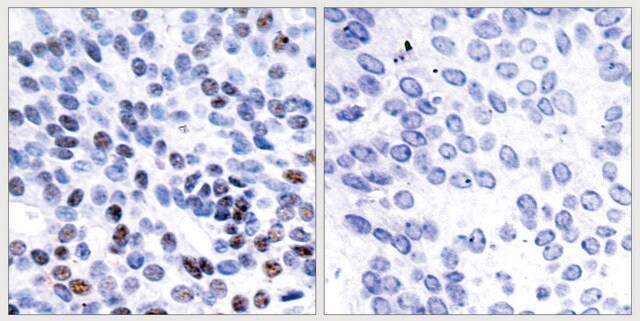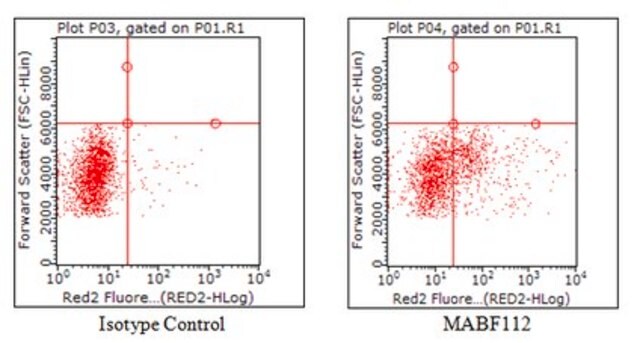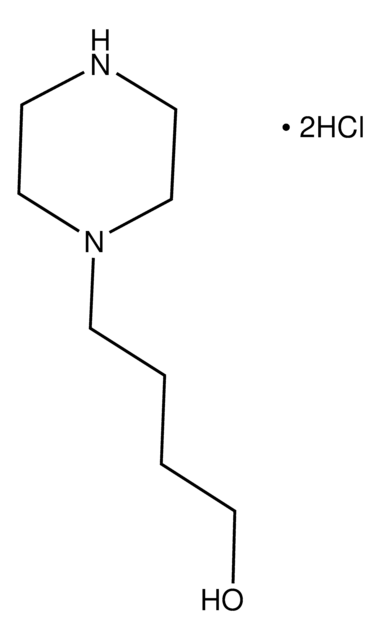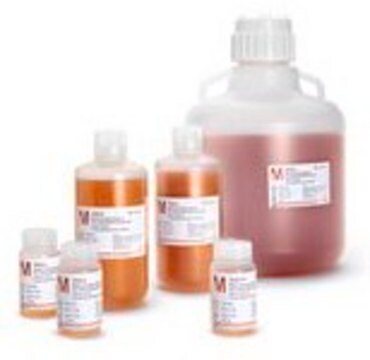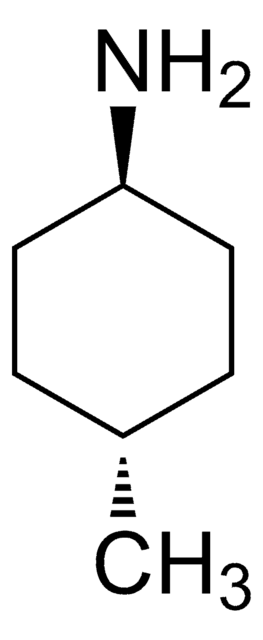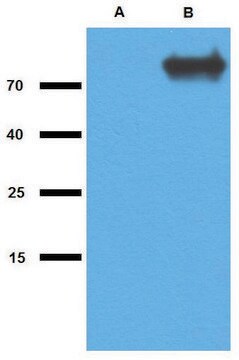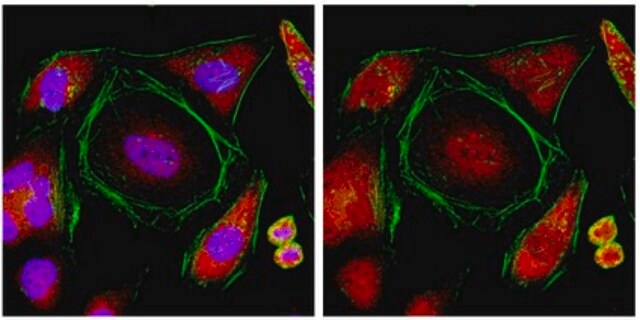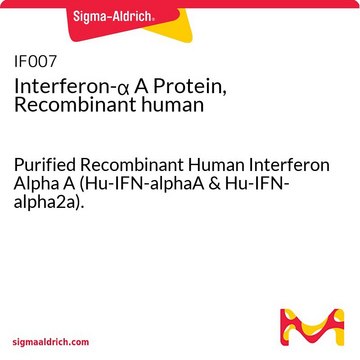About This Item
Polecane produkty
pochodzenie biologiczne
mouse
Poziom jakości
białko sprzężone
unconjugated
forma przeciwciała
purified antibody
rodzaj przeciwciała
primary antibodies
klon
75-5, monoclonal
masa cząsteczkowa
calculated mol wt 29.10 kDa
observed mol wt ~43 kDa
reaktywność gatunkowa
human, mouse
opakowanie
antibody small pack of 100 μg
metody
immunocytochemistry: suitable
western blot: suitable
izotyp
IgGκ
numer dostępu UniProt
Warunki transportu
dry ice
temp. przechowywania
2-8°C
docelowa modyfikacja potranslacyjna
unmodified
informacje o genach
mouse ... Junb(16477)
Opis ogólny
Specyficzność
Immunogen
Zastosowanie
Evaluated by Western Blotting in HeLa cell lysates.
Western Blotting Analysis: A 1:1,000 dilution of this antibody detected JunB in HeLa cell lysates.
Tested Applications
Western Blotting Analysis: A representative lot detected JunB in Western Blotting applications (Passegue, E., et. al. (2000). EMBO J. 19(12):2969-79; Farras, R., et. al. (2008). Mol Cell Biol. 28(12):4173-87; Gomard, T., et. al. (2010). PLoS One. 5(3):e9585).
Immunocytochemistry Analysis: A 1:1,000 dilution from a representative lot detected JunB in HeLa cell line.
Immunocytochemistry Analysis: A representative lot detected JunB in Immunocytochemistry applications (Bakiri, L., et. al. (2000). EMBO J. 19(9):2056-68).
Note: Actual optimal working dilutions must be determined by end user as specimens, and experimental conditions may vary with the end user
Postać fizyczna
Przechowywanie i stabilność
Inne uwagi
Oświadczenie o zrzeczeniu się odpowiedzialności
Nie możesz znaleźć właściwego produktu?
Wypróbuj nasz Narzędzie selektora produktów.
Kod klasy składowania
12 - Non Combustible Liquids
Klasa zagrożenia wodnego (WGK)
WGK 1
Temperatura zapłonu (°F)
Not applicable
Temperatura zapłonu (°C)
Not applicable
Certyfikaty analizy (CoA)
Poszukaj Certyfikaty analizy (CoA), wpisując numer partii/serii produktów. Numery serii i partii można znaleźć na etykiecie produktu po słowach „seria” lub „partia”.
Masz już ten produkt?
Dokumenty związane z niedawno zakupionymi produktami zostały zamieszczone w Bibliotece dokumentów.
Nasz zespół naukowców ma doświadczenie we wszystkich obszarach badań, w tym w naukach przyrodniczych, materiałoznawstwie, syntezie chemicznej, chromatografii, analityce i wielu innych dziedzinach.
Skontaktuj się z zespołem ds. pomocy technicznej